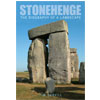
 |
Major new study of Stonehenge and its landscape published |
More than a million people visit the Stonehenge World Heritage Site every year, pondering the stones and soaking up the surrounding landscape. When was it built? Who built it? What was it? How did it work? Are among the most frequently asked questions.
In his new book, Timothy Darvill argues that around 2600 BC local communities transformed an existing sanctuary into a cult centre that developed a big reputation: perhaps an oracle and healing place. For centuries people came from near and far, and even after activities at the site began to decline the memory lived on and people chose to be buried within sight of the stones.
But Stonehenge itself is only part of a story that involves the whole landscape. People first came to the area during the last Ice Age nearly half a million years ago. Long before Stonehenge was built they were erecting posts, digging pits to contain sacred objects, and constructing long mounds to house their dead. By the Age of Stonehenge this was a heavily occupied landscape with daily life focused along the River Avon. Later, farms and hamlets were established, Roman villas came and went, and from about AD 1000 the pattern of villages dotted along the valleys and the town of Amesbury came to prominence. In the last hundred years or so the army established training grounds and camps, but the biggest battles in recent years have been over the future of the Stonehenge landscape.
Copies of the book are available now; order on-line at:
http://www.tempus-publishing.com/bookdetails.php?isbn=0752436414
Stonehenge. The biography of a landscape. Stroud. Tempus Publishing. 2006.
Timothy Darvill is Professor of Archaeology in the School of Conservation Sciences at Bournemouth University and has been involved with Stonehenge and its management for more than 20 years. Previous books include Prehistoric Britain (1994), the Concise Oxford Dictionary of Archaeology (2002), and Long barrows of the Cotswolds and surrounding areas (2004).
07/09/06